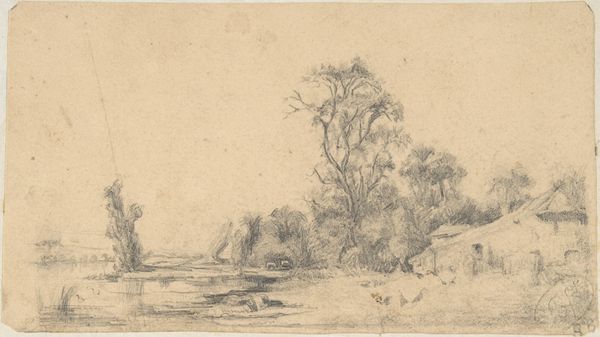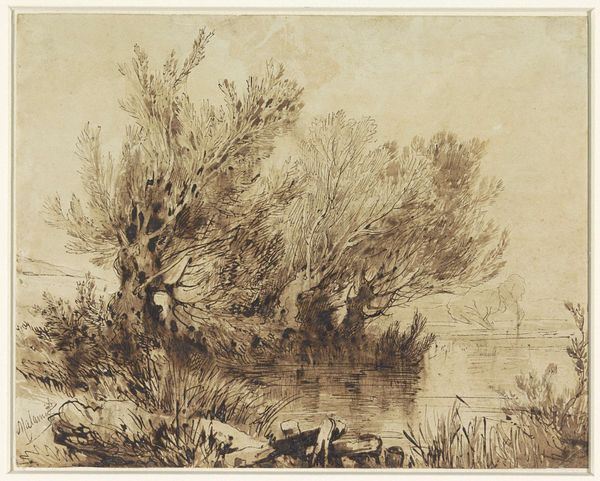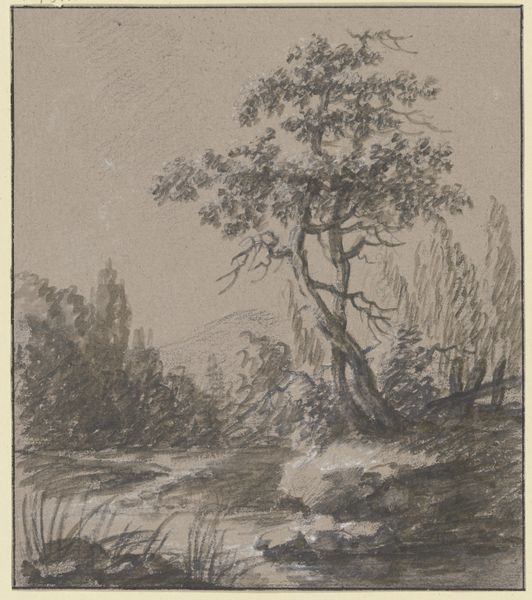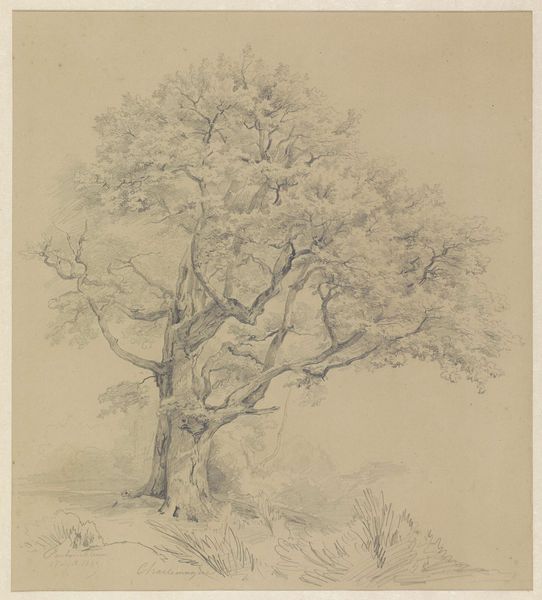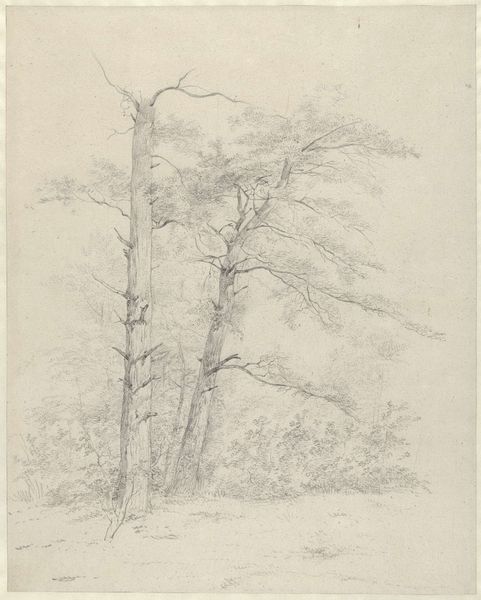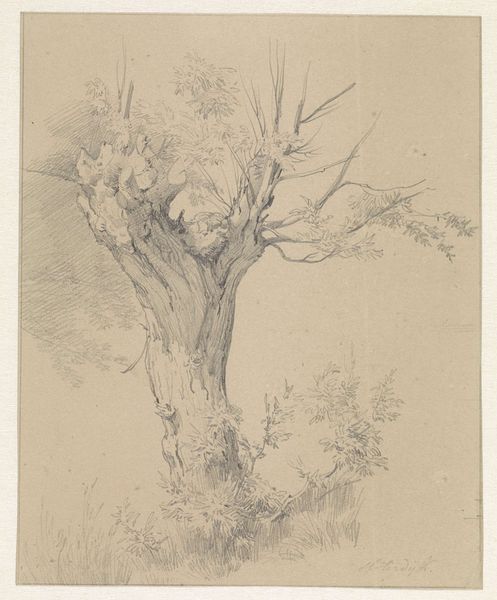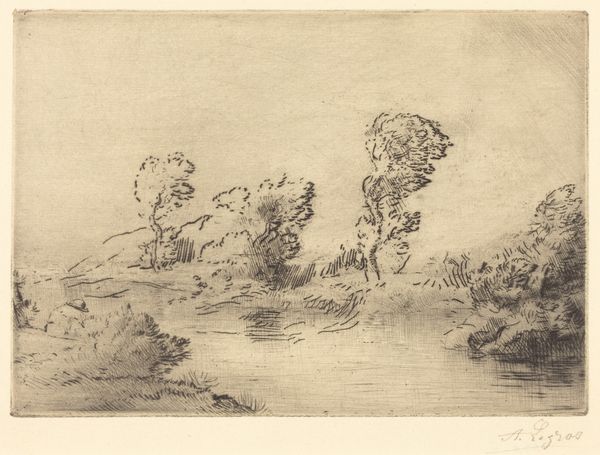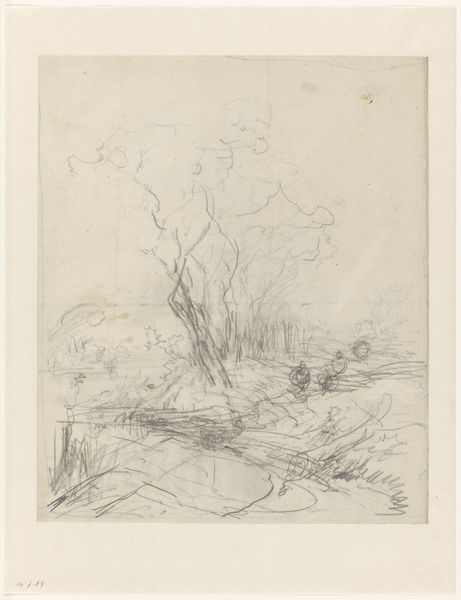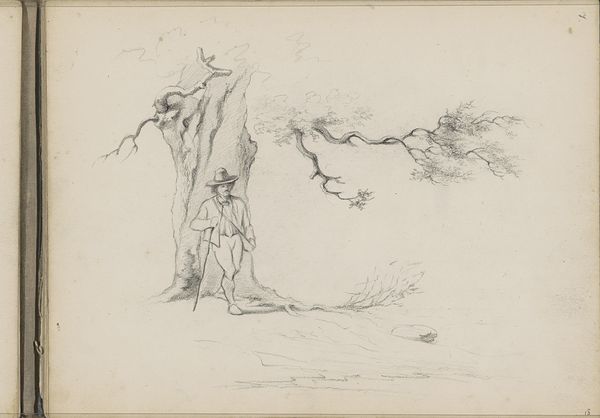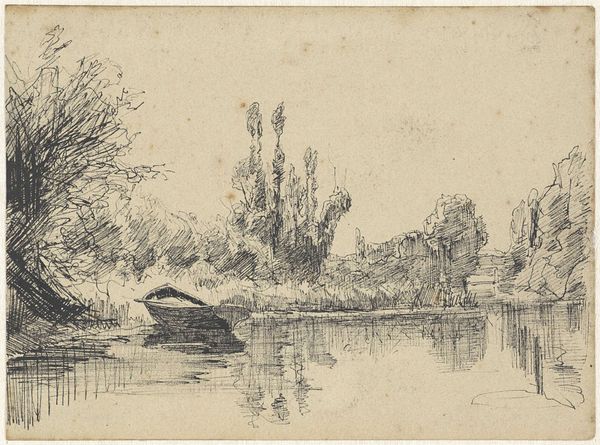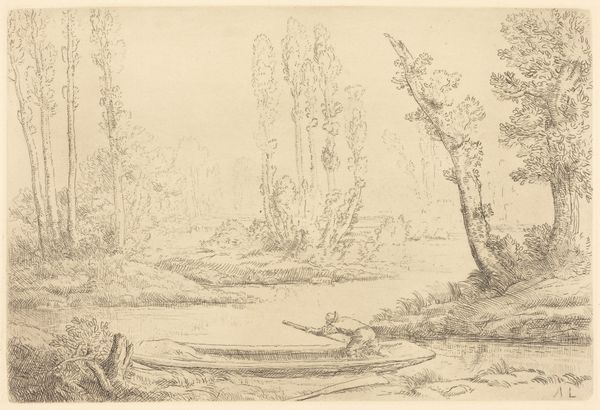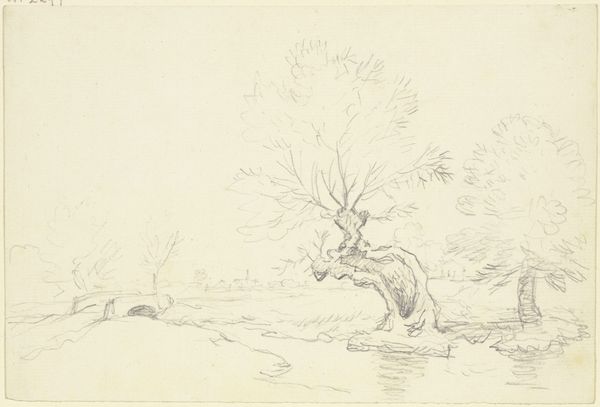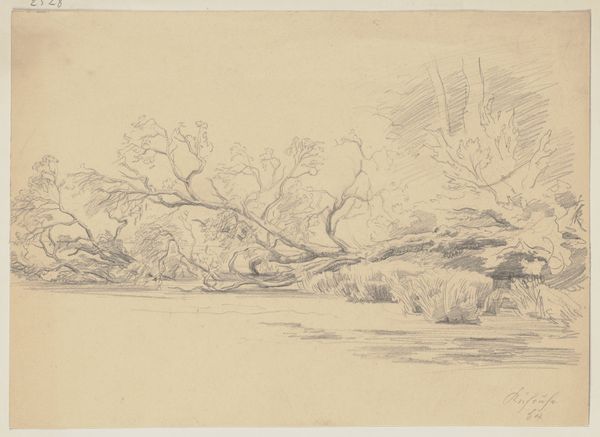
drawing, pencil
#
drawing
#
pencil sketch
#
landscape
#
romanticism
#
pencil
#
realism
Dimensions: height 209 mm, width 200 mm
Copyright: Rijks Museum: Open Domain
Curator: Standing before us is "Knotwilgen aan een water," or "Pollard Willows by a Waterway," a drawing executed in 1842 by Eugène François de Block, now residing here at the Rijksmuseum. What strikes you first? Editor: It has a rather ghostly feel. All muted greys and browns; I feel like if I stepped into this landscape I'd find myself in some forgotten memory. Curator: De Block, known for his realistic yet romantic landscapes, uses delicate pencil strokes here to capture the stillness of the water and the skeletal forms of the pollard willows. Note how the composition leads the eye: starting from the water in the foreground, drawing up to the willows and then fades subtly towards the sky. Editor: Precisely. The pencil work almost dematerializes in the background. I find it intriguing how he uses texture; a tight concentration of lines form the bark and then they are so sparse to denote the reflection. And then these jagged limbs like twisted fingers – were pollard willows always this gothic looking? Curator: Well, pollarding is a pruning technique to promote new growth, resulting in those characteristic knuckles we see here. This also ensures that livestock won’t graze and damage the fresh shoots. The technique goes back for centuries, they provide material for building fences. This technique creates the odd silhouettes we see today. Editor: It's interesting how this very functional, almost agricultural aspect gives birth to such an evocative image, right? To me, the skeletal forms are very symbolic, almost melancholic - and considering it’s rendered entirely in pencil, it highlights the temporality that is part of nature and therefore the world around us. What I find even more compelling is that the stark image is incredibly calming, no drama, no overt passion...just life going by. Curator: I appreciate how you highlight the contrast of melancholy and calm – a duality inherent to the Romantic sensibility. The bare trees and muted tones indeed speak to themes of mortality and the transience of time, very common in Romanticism. The skill is creating that mood so vividly with simple lead on paper. Editor: A successful translation, indeed. Thanks to its materiality this rather somber picture tells a gentle tale about life itself. Curator: Indeed, and seeing it reminds us how art captures these fleeting moments.
Comments
No comments
Be the first to comment and join the conversation on the ultimate creative platform.
